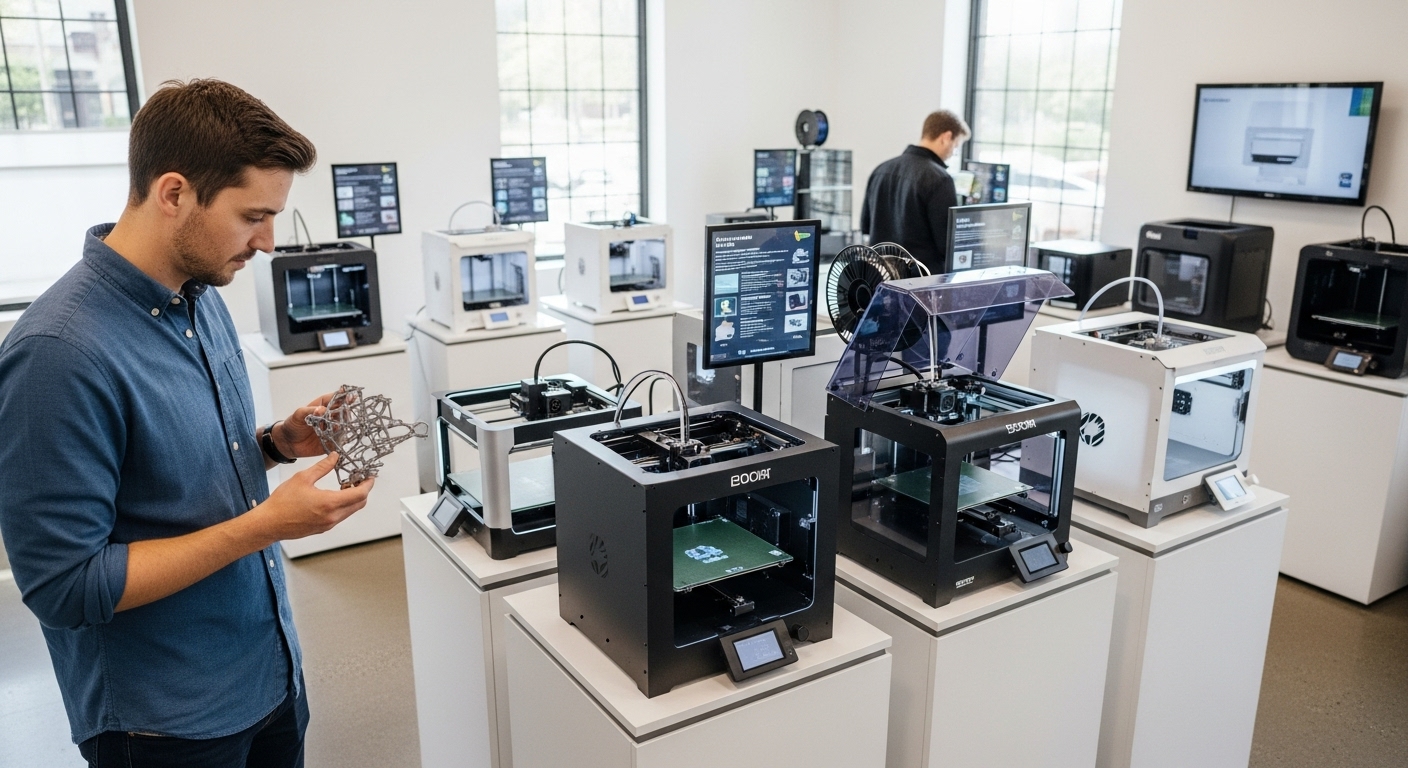Investing in a 3D printer can transform your business—boosting innovation, reducing lead times, and opening new product opportunities. But with so many technologies, materials, and price points available in 2025, choosing the right 3D printer can feel overwhelming. This guide breaks down the key considerations to help you make the best decision for your business needs.
Start with Your Use Case
Before diving into specs, define what you need the printer to do:
- Rapid Prototyping: Speed and ease of use are key.
- Functional Parts: Prioritize strength, precision, and material compatibility.
- Consumer Products or Art Pieces: Surface finish and visual quality matter most.
- Medical or Engineering Applications: Precision and material certifications are critical.
Key Factors to Consider
🖨️ 1. Printing Technology
- FDM (Fused Deposition Modeling):
- Best for prototypes and general-purpose parts
- Affordable and widely supported
- SLA/DLP (Resin-Based Printing):
- Exceptional surface finish and detail
- Ideal for jewelry, dental, and small intricate models
- SLS (Selective Laser Sintering):
- Industrial-grade quality
- Strong, functional parts with no need for supports
- Metal Printing (DMLS, SLM):
- Used for aerospace, automotive, and medical applications
- High cost, but high durability
🧪 2. Material Compatibility
Make sure the printer supports the materials your application needs—such as PLA, ABS, PETG, TPU, or specialty engineering filaments like PEEK or carbon-fiber blends.
📏 3. Build Volume
Match the build size to your typical part dimensions. Larger printers offer more flexibility but may cost more or require controlled environments.
💼 4. Ease of Use
- Consider touchscreen interfaces, auto-bed leveling, and slicing software.
- If your team is new to 3D printing, user-friendly machines can save time and training costs.
💰 5. Budget and ROI
- Entry-level FDM printers for business start around $500–$2,000.
- Professional resin printers range from $3,000–$10,000.
- Industrial printers (SLS, DMLS) can exceed $100,000—but may replace entire workflows.
Popular Business-Grade 3D Printers (2025 Snapshot)
| Printer Model | Type | Best For |
|---|---|---|
| Prusa MK4 | FDM | Prototyping, general manufacturing |
| Formlabs Form 4 | SLA | Medical models, dental, jewelry |
| Raise3D Pro3 Plus | FDM | Large-format parts, dual extrusion |
| EOS P110 Velocis | SLS | Industrial parts, engineering-grade use |
| Markforged X7 | FDM w/ carbon fiber | Functional tooling, automotive components |
Other Considerations
- Maintenance & Support: Choose a brand with reliable service and documentation.
- Software Ecosystem: Compatibility with CAD tools and slicers is essential.
- Safety & Ventilation: Resin and metal printers may require enclosures or fume extraction.
Conclusion
Choosing the right 3D printer depends on your goals, applications, and resources. A thoughtful approach ensures your investment delivers long-term value—not just as a tool, but as a strategic asset in your production process.


